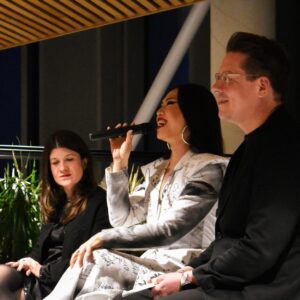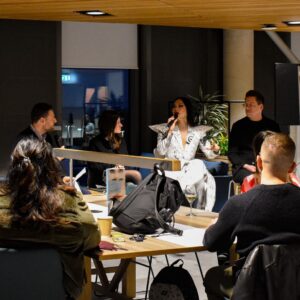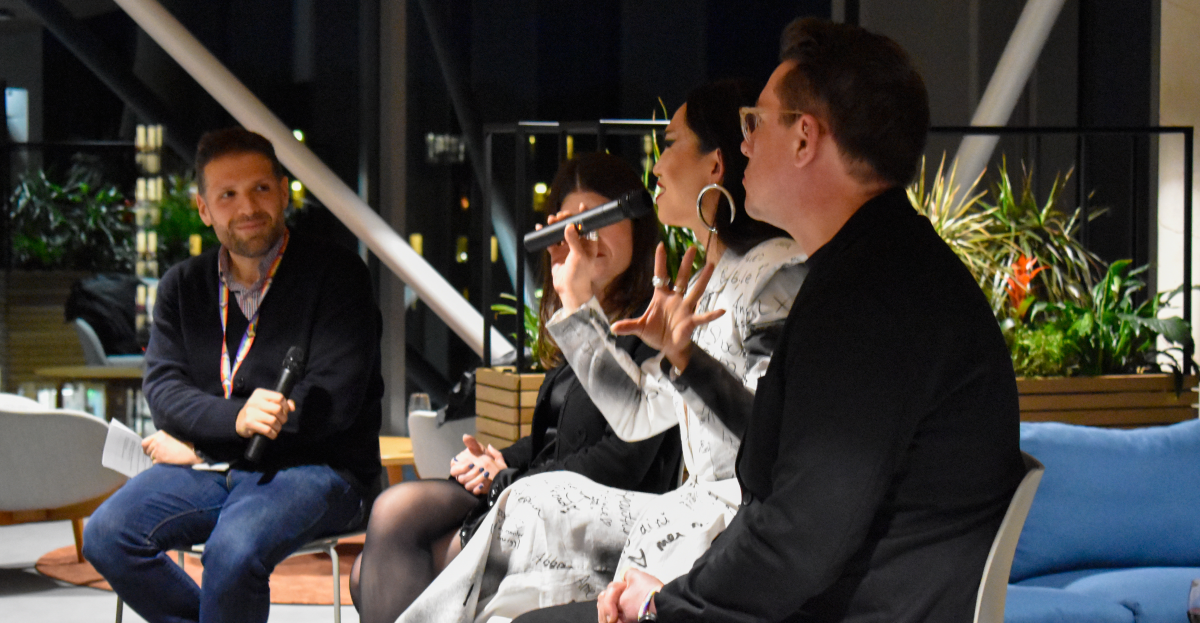Dr Mario Campana is one of the co-editors of the new book Drag as Marketplace: Contemporary Cultures, Identities and Business, along with Dr Mikko Laamanen, Dr Maria Rita Micheli, Dr Rohan Venkatraman and Dr Katherine Duffy. We celebrated the book’s launch during LGBT+ History Month 2025 with a panel discussion event at the School of Management, featuring RuPaul’s Drag Race UK star Le Fil.
We spoke to Mario, Maria Rita and Mikko about the tensions and triumphs that have accompanied drag’s move to the main stage.
Maria Rita Micheli (IÉSEG School of Management): “The fact that we editors have been working on diversity and inclusion themes for a while was something that brought us together. The idea of writing a book instead of a of a paper was that it could be a channel that allowed us to speak to wider audiences.

“In the book, we're talking about drag becoming a mainstream phenomenon and a market phenomenon – so it made sense to talk about these issues in a format that was more digestible than an academic paper. It also has a wider reach thanks to libraries, so students can read it, or even simply people beyond academia who are interested in the topic.”
Mario Campana (University of Bath School of Management): “We had a bit more freedom, as well, in terms of the kinds of discussion we could have in different chapters: we could put together a very diverse team of authors. Some of these topics would probably be quite tough to publish in an academic paper.”
Mikko Laamenen (Oslo Metropolitan University): “The way we in which we sold the book to the publisher was with the argument that there isn't a book like this on the market. And there truly isn't. We didn't want to just to focus on drag queens, but more broadly on the phenomenon of drag – these days, basically anyone can do drag.
“There isn't a book that looks at how markets and market devices come together with the phenomenon of drag. Although if we look at what drag is at the moment, it’s very much mixed with all of the phenomena that we would typically look at when we study consumer culture.
“I think in the original discussion back in 2021, where we came together with Mario to discuss the book, he was actually proposing that we do a conference sub-theme or track. I said that if we're going to go through all of this work, we might as well put it into a book!”
Mario: “One chapter is about drag in Germany, and focuses on one specific type of drag. It's more fringe drag – the type that in the US would be called the club kids – performers that do more of the weirdest forms of drag.
“It’s quite interesting, the relationship this has with mainstream drag. They need each other to survive. For example, mainstream drag needs these subcultures to innovate, while fringe performers need mainstream drag to attract people to their show because otherwise they don't make money.

“That kind of relationship – the tension between who's legitimate or who's not legitimate in the market – is fascinating.
“Drag has been going on since Shakespeare, but effectively RuPaul’s Drag Race really helped to bring it to the to the fore. Of course, as soon as you marketise something and capitalise on it, then you lose a lot of the meanings that were attached to it and some people are even more stigmatised than before.”
Mikko: “RuPaul himself says that the show originally was created as America's Got Talent meets Project Runway meets other kinds of reality shows: the time was right to bring something like that to the market.
“It’s as innovative as it as it gets, and very successful – but even aside from that that, what Drag Race really has achieved is that it has brought forth the ‘authentic’ representation of drag queens. In mainstream culture, rarely has drag ever been represented by people who actually do it.”
Maria Rita: “In the book’s conclusion, we developed this framework to summarise what we have in the chapters, talking about important themes of legitimisation, stigmatisation and commodification of drag. We try to pull all these things together to try to understand: after the mainstream-isation of drag, what is going on? What's next? If we want to understand the evolution of drag as a market or as a cultural product, where should we look?
“For me, one of the most surprising things in the book was seeing drag in contexts that aren’t the traditional or mainstream ones that we see on TV or at drag shows. But then, if we think carefully about it, this shouldn't be anything surprising!”
Mikko: “One of the positive things that RuPaul’s Drag race has brought to society is in a concept called ‘teaching the children’. It’s bringing that sort of spoken history, that experience of being part of the community forward. It has a very positive effect in a sense of offering an outlet where gay youth or queer youth can see that it's not happening just to them, and that there is a long lineage here.”
Mario: “I was talking to this with one of our chapter authors earlier. She said that they had the first book on consumption and feminist and gender studies 15 years ago. They had a similar initial idea, the diverse chapters and things like that. And since then, the field has exploded and is still going strong.
“So you know, hopefully we in ten years we will be at the stage at which we'll do this again and say, ‘This is how it’s changed in ten years’!”
Respond



